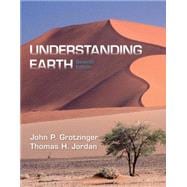For the introductory geology or physical geology course. Understanding Earth offers both majors and non-majors rock solid content that originated with the ground-breaking text, Earth. In subsequent editions, the text has consistently met the needs of today’s students with exceptional content, currency, interactive learning features, and an overall focus of the role of geological science in our lives.
Understanding Earth doesn’t merely present the concepts and processes of physical geology— the authors focus on how we know what we know. Students actively take part in the scientific process of discovery and learn through experience as they explore the impact of geology on their lives as citizens and future stewards of the planet. The new edition incorporates coverage of recent natural disasters (the 2011 tsunami), fracking and other natural resources issues, the latest developments in climate change, and key events such as the Mars mission and the arrest of geologists in Italy.








